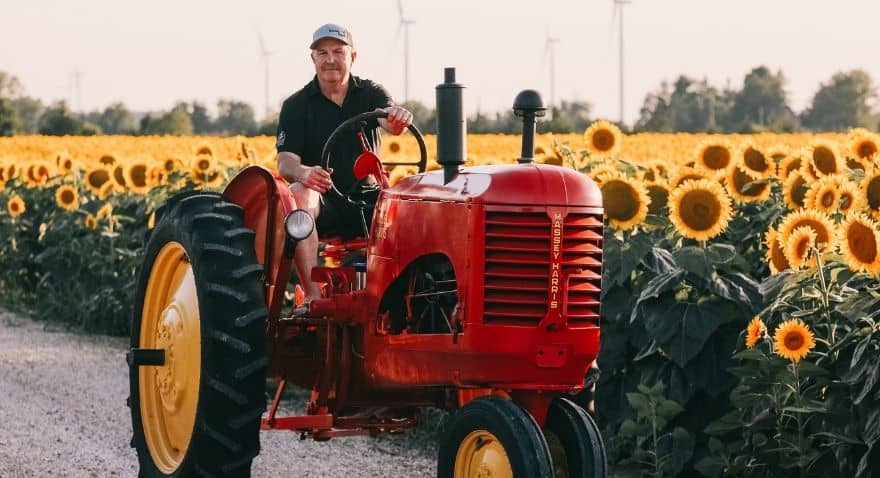
“If we ever needed to see sunflowers, it’s this year,” Martha said with a gentle laugh that, through the phone, sounded more like a smile. I found myself smiling and laughing along with her and her husband, Manley, as we ended our time together.
Meet Manley and Martha Jackson, landowners in Blenheim, Ontario.
The Jacksons have had an interesting life and farmed for a long time, doing all the work and dealing with all the headaches, challenges, and stresses that came with it.
“Then we had a loss in our family,” said Martha, “and it really put a different perspective on life. You start to see things differently after an experience like that and really decide what’s important.”
It is well documented that people who suffer major loss or tragedy will oftentimes make changes in their lives, and the Jacksons have done a brilliant job of it. Instead of working themselves too hard and not having time to truly enjoy the fruits of their labour, they flipped the script and decided to become sharecroppers, which has provided them with a happy life on their land that they truly enjoy.

Sharecropping
To a city guy like myself, discovering his own love of a less stressful life, I had a few things to learn about sharecropping, and the Jackson’s were kind enough to share with me. I have to say, it doesn’t sound like a half bad way to live.
Here’s how it works: The Jacksons own their land, and they strike business deals with other business owners that can make use of it. It’s very entrepreneurial and I was fascinated at how they were able to combine several different types of farming (and revenue) on their land, without doing all the physical labour themselves.
“We practice rotation for our land,” said Manley, “which means that each part of the farm doesn’t necessarily have crops growing every year. It’s a more efficient way to maintain the land’s productivity, and good for the overall health of the land and environment as well.”
This year, the Jacksons have a deal with a sunflower farmer, and we got to talking about the different products that come from sunflowers, and then I had to stop them.
“You know,” I said, “I think sunflowers are pretty, but one time I was alone in a field of them, they were as tall as people, and I could swear they were watching me.”

There was a pause on the phone, and then Manley said, “You are from the city,” and we all started laughing again.
Martha shared that yes, the sunflowers can get up to six feet high, and they are beautiful to see. (As all of you reading along can see from the photos.)
If we ever needed to see sunflowers, it’s this year.
Bees and Wind
In addition to sunflowers, there is a beekeeper who loads his beehives onto a flatbed truck, drives them over to the Jackson’s property and lets them do what bees do, which they also enjoy. “Friends of the family,” Martha told me.
Finally, the Jacksons farm wind. “Having wind turbines on our property has been great,” said Martha. “Pattern has friendly people that we really enjoy working with. Sometimes Kevin, the Area Manager, will stop by just to see how we are doing, and Pat has been phenomenal. We usually ride back to ‘Wind Lane’ every day. We love to see the turbines in action, and we feel it’s been a great experience.”

We were getting to the end of our conversation, and both Martha and Manley shared a few other thoughts about wind generation and their part in it. “It’s really to everyone’s benefit,” Martha said. “Plus,” Manley added, “Pattern is a great community partner beyond just wind, and that has really made a huge difference in our community. They back up their principles, and we really appreciate that.”
As our time talking drew to a close, we couldn’t avoid talking about our hopes for a better global situation in the future.
We were all silent for a few moments, and Martha said, “If we ever needed to see sunflowers, it’s this year.”
